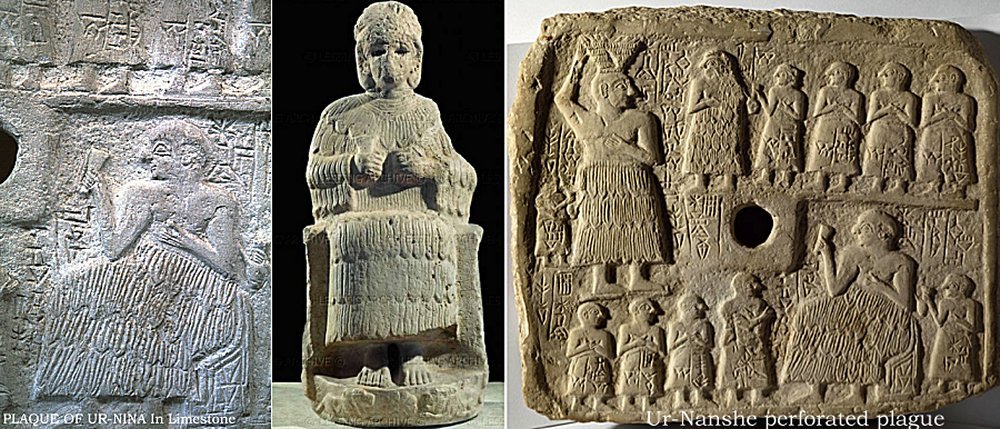Votive Plaque Dedicated To Dudu High Priest Of God Ningirsu
A.Sutherland - AncientPages.com - Votive plaques were characteristic and widespread pieces of art in the Second and Third Early Dynastic Periods (2800-2340 BC) of Sumer.
With round perforations in the center, they were decorated with diverse incised or carved scenes.
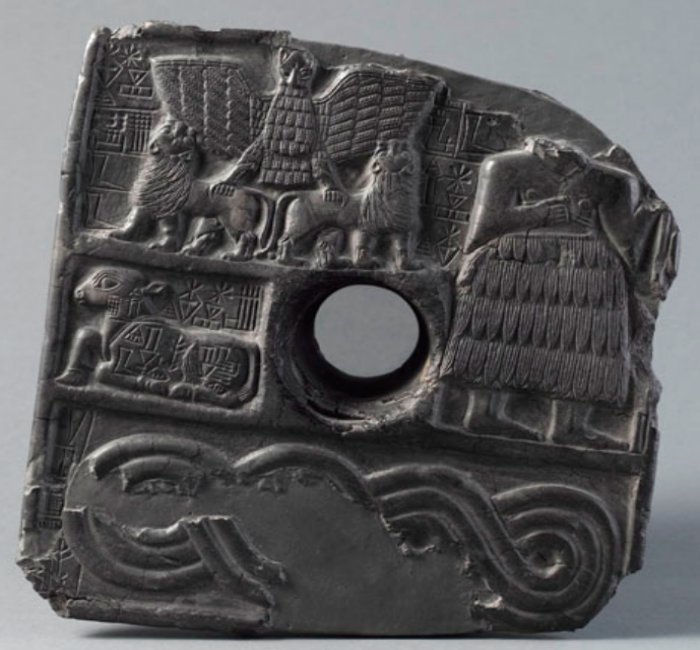
Perforated plaque of Dudu, the high priest of Ningirsu in the reign of Entemena, prince of Lagash (c.2450 BC). Credits: Louvre
This relief, with its central round perforation, is divided into four, horizontal parts (registers) and according to a Sumerian inscription, it depicts Dudu, the high priest of the god Ningirsu during the reign of Entemena - the king of Lagash, who reigned about 2418-2391 BC
Dudu’s figure occupies the height of two registers on the plaque and faces right; the figure is dressed in the kaunakes, (originally traced to the Sumerian civilization, which existed even before 4,000 BC), a skirt in sheep's wool or other tufted material.
Incised to his left is the lion-headed eagle, called Imdugud, a symbol of the god Ningirsu and emblem of Lagash, as found in other similar plaques from Telloh (Tello). The eagle is depicted with wings outspread, two lions gripped in his talons. In the middle, a calf is shown lying down, while the lower register is filled by a motif of running water, probably symbolizing the subterranean water reserves for crops or source of fertility.
The dedicatory inscription, confined to the area left free by the image in the upper part, runs over the body of the calf: "For Ningirsu of the Eninnu, Dudu, priest of Ningirsu ... brought [this material] and fashioned it as a mace stand."
See also:
Millennia-Old Sumerian Tripod Vase Dedicated To God Ningirsu, The Son Of Enlil
Ur-Nammu - Popular And Accomplished Ruler Of Sumer
Codes Of Ur Nammu: World’s Oldest Known Law Code
King Ur-Nammu – King Of Ur, King Of Sumer And Akkad – The One Who Built The Temple Of Enlil
Made of gypsum or limestone, the Sumerian perforated plaques are decorated with scenes from Sumerian life and have been excavated at many sites in Mesopotamia. About 120 of them are known to exist now and about fifty plaques were found in religious buildings.
They are usually rectangular in form and decorated with scenes incised or carved in relief.
The exact function of this kind of plaques is unknown, and so is the purpose of the central perforation. The inscription here at first led scholars to consider them as mace stands, but it seems unlikely.
Some have suggested they were to be hung on a wall, the hole in the center taking a large nail or peg, they could even part of a door-closing mechanism.
Perforated plaques such as this one were usually organized in horizontal registers, depicting various ceremonies, banquets, the construction of buildings (as in the perforated plaque of Ur-Nanshe), and other royal events.
Written by – A. Sutherland - AncientPages.com Senior Staff Writer
Copyright © AncientPages.com All rights reserved. This material may not be published, broadcast, rewritten or redistributed in whole or part without the express written permission of AncientPages.com
Expand for referencesReferences:
- Dickin, Pagan Trinity
More From Ancient Pages
-
 Undeciphered Ancient Symbols On Boulders In Pennsylvania And New England Could Be An Ancient Diary Of Forgotten Civilizations And Events
Featured Stories | Jul 4, 2024
Undeciphered Ancient Symbols On Boulders In Pennsylvania And New England Could Be An Ancient Diary Of Forgotten Civilizations And Events
Featured Stories | Jul 4, 2024 -
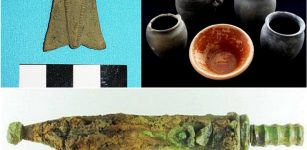 Rare Roman Brooch And A Miniature Sword – Unearthed
Artifacts | Jan 18, 2016
Rare Roman Brooch And A Miniature Sword – Unearthed
Artifacts | Jan 18, 2016 -
 Mystery Of The Bloody Island Poveglia – A Place Of Hell In Ancient And Modern Times
Featured Stories | Jan 21, 2016
Mystery Of The Bloody Island Poveglia – A Place Of Hell In Ancient And Modern Times
Featured Stories | Jan 21, 2016 -
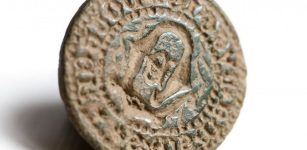 Unique Seal Stamp That Belonged To Elisabeth Buggesdatter, One Of The Most Powerful Women In Denmark – Discovered
Archaeology | Dec 19, 2018
Unique Seal Stamp That Belonged To Elisabeth Buggesdatter, One Of The Most Powerful Women In Denmark – Discovered
Archaeology | Dec 19, 2018 -
 Researchers Find An Elusive European Ancestor Of Lager Yeast In Ireland
Archaeology | Dec 14, 2022
Researchers Find An Elusive European Ancestor Of Lager Yeast In Ireland
Archaeology | Dec 14, 2022 -
 Evidence Of Ancient Lakes In The Sahara Desert Discovered
Archaeology | Nov 5, 2022
Evidence Of Ancient Lakes In The Sahara Desert Discovered
Archaeology | Nov 5, 2022 -
 Baroque-Period Marble Skull Analyzed With Standard Forensic Anthropological Techniques
Archaeology | Feb 16, 2022
Baroque-Period Marble Skull Analyzed With Standard Forensic Anthropological Techniques
Archaeology | Feb 16, 2022 -
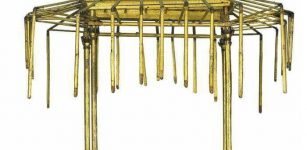 Was Tutankhamun’s Chariot Equipped With Its Own Sunshade?
Archaeology | Jun 27, 2019
Was Tutankhamun’s Chariot Equipped With Its Own Sunshade?
Archaeology | Jun 27, 2019 -
 Ancient Intercontinental Underground Tunnels Built By Survivors Of A Great Catastrophe And The Snake God Connection
Ancient Mysteries | Jul 4, 2018
Ancient Intercontinental Underground Tunnels Built By Survivors Of A Great Catastrophe And The Snake God Connection
Ancient Mysteries | Jul 4, 2018 -
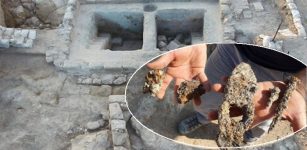 1,400-Year-Old Iron Hammer And Nails Among Findings At Sanhedrin, Western Galilee’s Usha
Archaeology | Nov 6, 2019
1,400-Year-Old Iron Hammer And Nails Among Findings At Sanhedrin, Western Galilee’s Usha
Archaeology | Nov 6, 2019 -
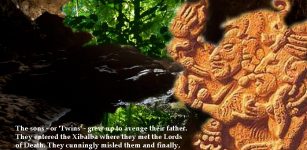 Xibalba: Nine-Leveled Underground Place Of Fear Ruled By Lords Of Death In Maya Beliefs
Featured Stories | May 12, 2020
Xibalba: Nine-Leveled Underground Place Of Fear Ruled By Lords Of Death In Maya Beliefs
Featured Stories | May 12, 2020 -
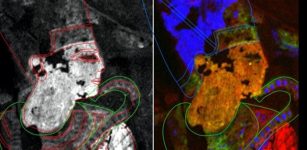 Hidden Details In Ancient Egyptian Tomb Paintings Revealed By Chemical Imaging
Featured Stories | Jul 28, 2023
Hidden Details In Ancient Egyptian Tomb Paintings Revealed By Chemical Imaging
Featured Stories | Jul 28, 2023 -
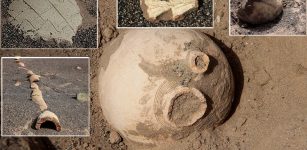 Ruins Of Ancient City Emerged From The Sand In Kerman Province, Iran
Archaeology | Apr 15, 2017
Ruins Of Ancient City Emerged From The Sand In Kerman Province, Iran
Archaeology | Apr 15, 2017 -
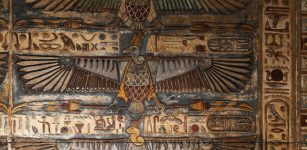 Never-Before-Seen Colorful Inscriptions And Reliefs At The Esna Temple, Egypt Revealed After Restoration
Archaeology | May 16, 2022
Never-Before-Seen Colorful Inscriptions And Reliefs At The Esna Temple, Egypt Revealed After Restoration
Archaeology | May 16, 2022 -
 Who Made The Mysterious Ancient Cave Paintings And Inscriptions In Oklahoma 2,500 Years Ago?
Featured Stories | Jul 23, 2024
Who Made The Mysterious Ancient Cave Paintings And Inscriptions In Oklahoma 2,500 Years Ago?
Featured Stories | Jul 23, 2024 -
 Glima – Ancient Martial Art Practiced By The Vikings Is Still Popular Today
Ancient Traditions And Customs | Mar 7, 2017
Glima – Ancient Martial Art Practiced By The Vikings Is Still Popular Today
Ancient Traditions And Customs | Mar 7, 2017 -
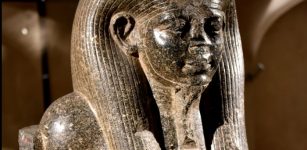 Hapi: Early Egyptian God Of The Nile And Bringer Of Fertility, Abundance And Life
Egyptian Mythology | Mar 20, 2019
Hapi: Early Egyptian God Of The Nile And Bringer Of Fertility, Abundance And Life
Egyptian Mythology | Mar 20, 2019 -
 Unexpected Archeogenetic Study Results Obtained In Graves Of Mödling And Leobersdorf, Lower Austria
DNA | Jan 16, 2025
Unexpected Archeogenetic Study Results Obtained In Graves Of Mödling And Leobersdorf, Lower Austria
DNA | Jan 16, 2025 -
 Unexplained Mystery Of The Dangerous Invisible Enemy In A French Town
Featured Stories | Feb 25, 2024
Unexplained Mystery Of The Dangerous Invisible Enemy In A French Town
Featured Stories | Feb 25, 2024 -
 Children Of Lir And Aoife’s Curse – Celtic Legend That Inspired The Swan Lake Ballet
Myths & Legends | Feb 8, 2024
Children Of Lir And Aoife’s Curse – Celtic Legend That Inspired The Swan Lake Ballet
Myths & Legends | Feb 8, 2024

